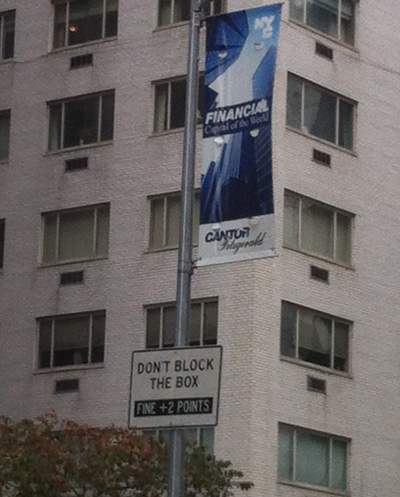Maybe, instead of positioning traffic cops at troublesome intersections, we should station Hopkins DNP grads. That stands for Doctor of Nursing Practice, not “do not proceed,” but these are the folks who stop vexing health care problems in their tracks with a mix of common sense, understanding of Big Data as well as human nature, dogged study of a problem, and a huge chunk of cleverness.
Some of the problems they fix every day bring to mind that old expression seared into the skulls of New Yorkers living in the city during a gridlock-busting campaign in the Eighties: “Don’t Block the Box.”
The city had been experiencing excruciating traffic clogs, many caused simply by a car or cars driving through a yellow light and pulling into the intersection to wait for the lane to clear in front of them. As the light changed, and the cars ahead hadn’t budged, they had nowhere to go. Drivers heading in a perpendicular direction now pulled into the intersection as well, cars surging behind them and trapping everybody. Pedestrians with the “walk” sign now picked their way through the tangled vehicles, forming the mortar between the bricks. Gridlock, hand gestures, and honking commenced. And it continued until the traffic cops could get through the snarl to sort it all out.
 Ugh. Part ignorance, part arrogance, part impatience, “blocking the box” is even more infuriating because it is so easy to avoid. If there’s no space for your car across the intersection, even if the light is still green, don’t go. Sure, you might make it. If not, well …
Ugh. Part ignorance, part arrogance, part impatience, “blocking the box” is even more infuriating because it is so easy to avoid. If there’s no space for your car across the intersection, even if the light is still green, don’t go. Sure, you might make it. If not, well …
And so it continues today, and not just in New York.
It took 30 minutes to get from Bank Street in Highlandtown to 525 N. Wolfe St. in East Baltimore one sunny autumn 2013 morning. It should take five. Yes, it was the deadly 8:30-9 a.m. slot. But, whoa. All the biggies — Baltimore Street at Washington Street, Baltimore at North Wolfe Street, Orleans Street at North Wolfe, Orleans at Broadway — were at least partially blocked by a car caught in the intersection. You could see other intersections as you were stuck in yours. One dude in an eggplant-colored sedan absentmindedly chatted on his cellphone in the middle of the intersection while drivers unable to cross it and thus get to work lost their minds.
What are we thinking?
Here’s what (admittedly springing to mind in weaker moments): Rather than common sense, let’s say we go semi-apocalyptic. A yellow light initiates the slow rise of sharp spikes from the asphalt. Enter the intersection when it’s not your turn and blow out your tires. Works for red-light runners too! No more cops writing tickets for that, and fewer deadly crashes. (Lost city revenue from fines would be more than offset by receipts from municipally run tire repair shops at troublesome intersections.)
Like that wouldn’t be effective?
OK, maybe instead we’ll just leave it to the DNPs, whose stock in trade is to be even sharper than spike strips. In the Fall/Winter issue of Johns Hopkins Nursing, there’s a well-written feature by Baltimore freelance writer Jim Duffy on just what makes the Hopkins DNPs so special, and why there’s such a traffic jam of suitors eager to hire them. There’s also a little story on DNP Scott Newton, a whiz at solving transportation issues for the emergency helicopters, planes, and ambulances called upon to save lives on a second’s notice.
Give them a read once you’re done here.
Maybe on your smartphone. Hey, here’s a DNP-worthy idea: Hand the phone to a passenger and have her or him read the blog to you aloud, so you’ll be fully alert and ready to move into the intersection … once the traffic in front of you has cleared.
Makes sense, right?
-Steve St. Angelo
